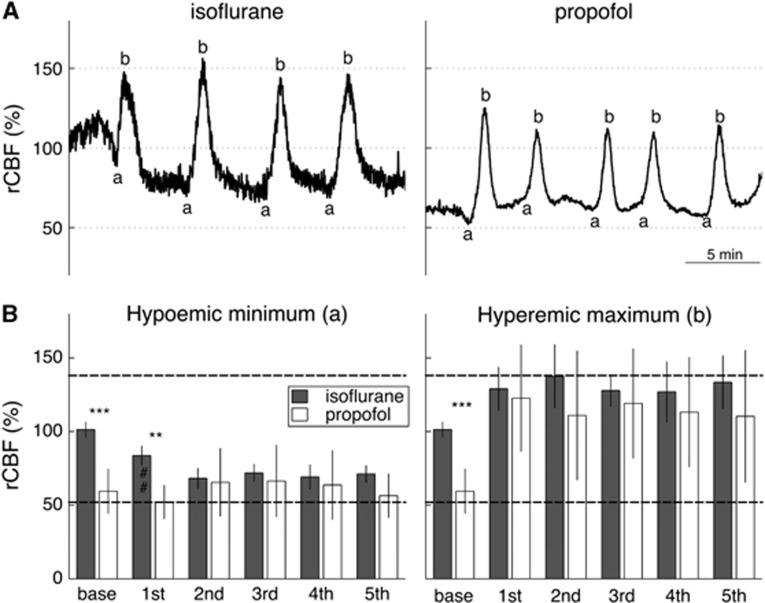Figure 2.
Regional cerebral blood flow (rCBF) response to multiple cortical spreading depolarizations (CSDs) under isoflurane or propofol anesthesia. (A) Typical rCBF responses to CSDs induced by epidural application of 3 mol/L KCl under isoflurane (left) and under propofol (right) (experimental group 2). We here show the rCBF responses from the ROI shown in Figure 1A. Note the lower frequency of CSD occurrence under isoflurane in comparison with propofol.44 As CSDs recurred within 5 minutes, only points a and b, as defined in Figure 1, were analyzed. The same rCBF scale as in Figure 1 was used, 100% being baseline rCBF under isoflurane before KCl application. (B) Bar plot of the average±s.d. rCBF values for points a (left) and b (right) across all isoflurane (n=5) and all propofol (n=4) animals, respectively. Point ‘base' refers to the resting-state rCBF, calculated as the average ICT value over 2 minutes before KCl application (given 100% for isoflurane). Unpaired t-test between base rCBF in animals anesthetized with isoflurane and those with propofol was significant (***P<0.001). Horizontal dashed lines indicate maximum and minimum rCBF measured across all animals. Significance for ANOVA post hoc pairwise multiple comparison for the factor ‘anesthesia' is indicated as **P<0.01, and for factor ‘SD number' as ##P<0.01.

